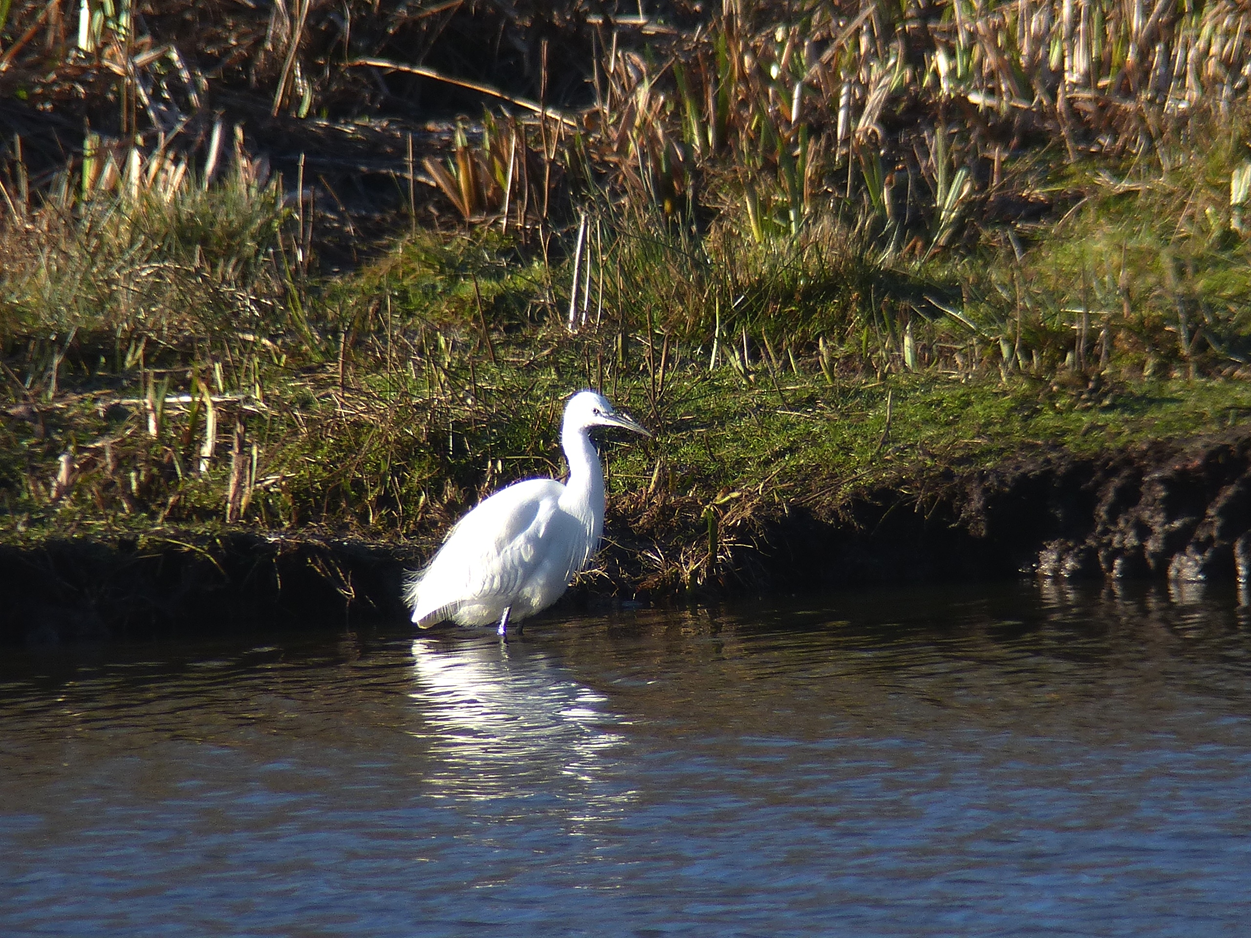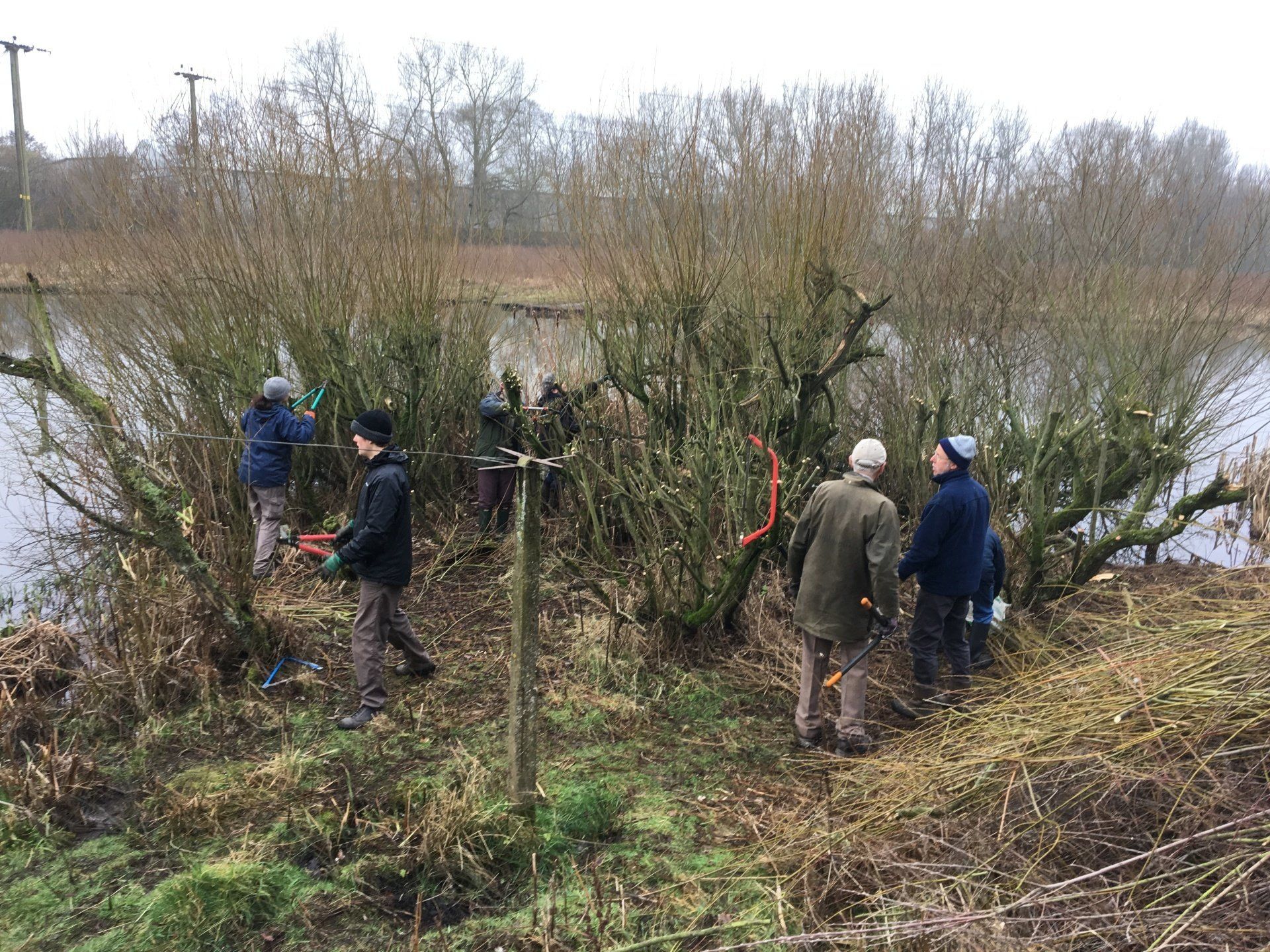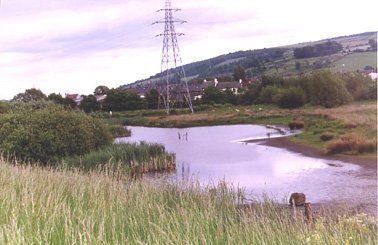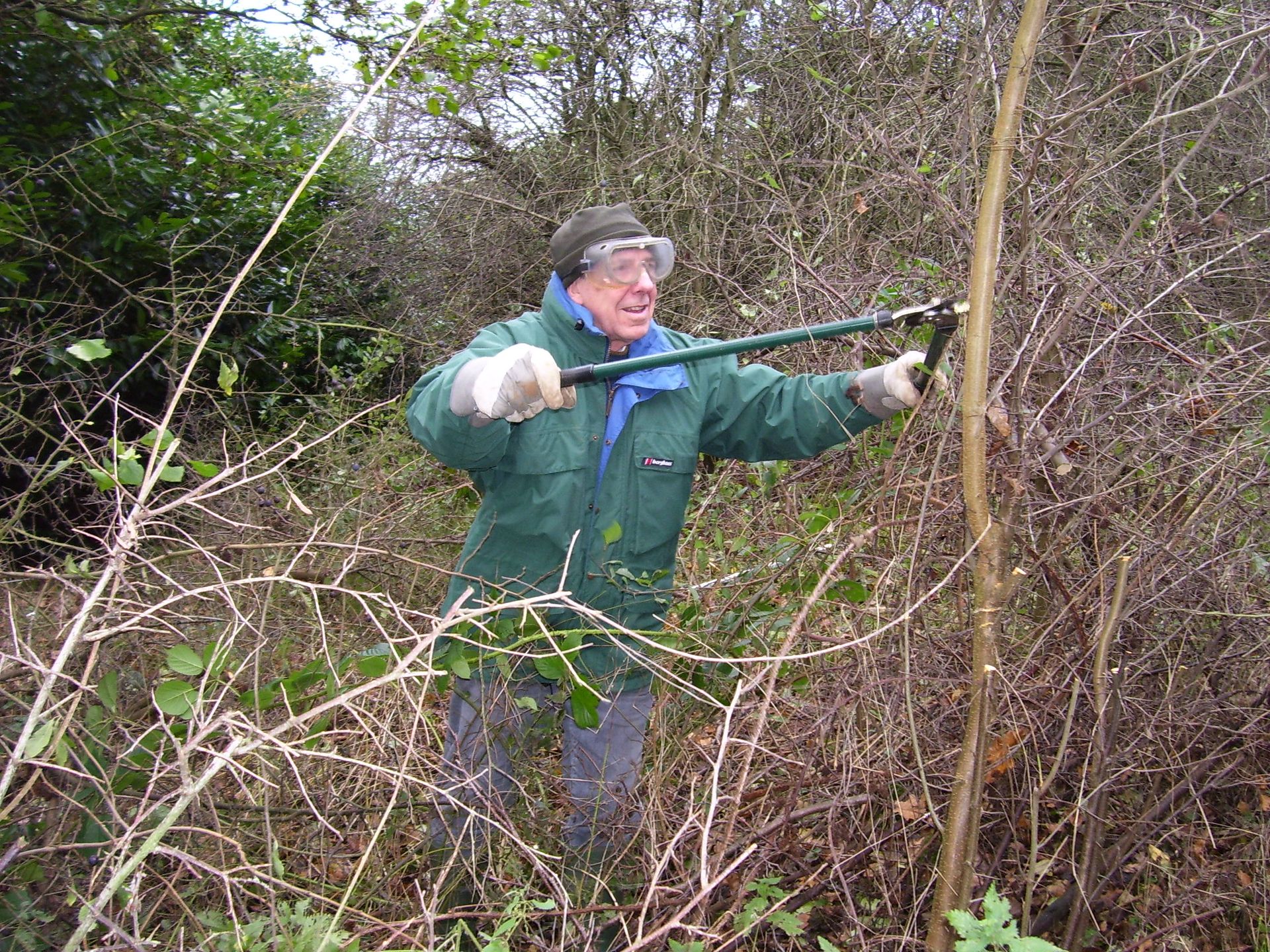Stockbridge Nature Reserve
Stockbridge Nature Reserve was the first area acquired by the group. This is a wetland site in the valley bottom adjacent to the river Aire and has a scrape and small shallow lake. The large hide over-looks the main pool and much of the site. Warblers breed in the vicinity, Kingfishers use the site daily and Water Rail are regular winter visitors. Keys to the hide are provided for all members and a daily log is kept on-site.
If you wish to visit the Reserve you will have to be a B.O.G. Member. Please contact Shaun Radcliffe on 01274 770960 or e-mail at shaun.radcliffe@btinternet.com for further information.
Stockbridge Nature Reserve Newsletter – Winter 2018
December was decidedly mild but plenty of birds still visited the feeder with up to six Reed Buntings at times. Finches and Sparrows are untidy eaters so any seed dropped to the ground was willingly eaten by a female Mallard with a broken wing. An over wintering Chiff-Chaff was seen on 6th of the month in the willows near the feeder. Occasionally, the Water Rail searched below the feeder providing excellent views from the hide. What was thought to be a sleeping male Goosander on the nearer island proved to be a dead one but no clues as to why it died. The corpse remained there for three days before disappearing. A Little Grebe was recorded on 30 December diving successfully and seen eating a small fish. Although Siskins were on the Reserve, none have been seen on the feeders but fly down from a large alder tree to drink water in the shallows below the willows with up to six birds involved.
There were two sightings of Little Egret during January and a Snipe flew in to search for food in an area cleared in previous months. House Sparrow numbers amounted to double figures whilst Reed Buntings maximum was seven birds. On the final day of January with the weather now freezing, nine Cormorants flew past flying east with another six heading in the same direction four days later. February brought records of drumming Great Spotted Woodpecker, an overflying Oystercatcher and five Snipe being flushed. Canada Geese numbers now built up with 60 birds in the field to the right of the Reserve. A flock of 30 Goldfinch circled the Reserve followed closely by the local Sparrowhawk.
During this period, members helped by cutting back the willows. The photograph shows the action taken. Common reed overgrowing in the stream area was dug out and re-planted at the east end of the Reserve to help the reed bed there increase. My thanks go to all who helped in these jobs.

Little Egret
Thank you to all those members who have helped out with the jobs this autumn.
If any BOG member who has an interest in joining a working party please contact me. Contact details are on our web-site.
Shaun Radcliffe

Stockbridge Nature Reserve Newsletter – Autumn 2018
This is a summary of sightings during the period September to the end of November. We had a few working parties and it was nice to see that the area cut and raked has been used by birds. Three Teal were seen feeding there probably picking up the seeds deposited during the cutting. With the weather dry and mild some willow pruning also took place.
At the end of September, a Water Rail was on site with two seen by 14th of October. The bird is fairly regularly seen from the hide as it searches under the feeder for scraps. Last record for Whitethroat was a typical date on 6 September when a bird was seen feeding amongst the cotoneaster.
Evening bird activity became interesting with 128 Mallard counted and for a short while, a Starling murmuration took place involving up to 2000 birds on 4 November.
Other records include a Snipe flushed near the stream, a Tawny Owl calling at 19.30 in mid October and of a mystery bird on 11 November. A brief sighting was of a white bird flying low between the reeds near the stream. Little Egret has been recorded before but the observer was not convinced. A few days later the bird re-appeared – a 100% white Pheasant!
As the months moved on, more sightings of Goosanders were noted with a male displaying to two females near to the end of November. During a day of gales, a Wigeon flew in to stay just 10 minutes, an uncommon species at the Reserve. A dead Tufted Duck was discovered and must have collided with the overhead power cables.
It is obvious that House Sparrows had a successful breeding year with double figures of birds at the feeders with one day 15 counted. This has been noted by the local Sparrowhawk who was a regular visitor. A Little Grebe also visited for a week.
Some other records included two records of Little Egret, a dead young hedgehog, and during the clearing of the small pond, a great diving beetle was seen. A bank vole enjoyed the small handful of seed scattered on the wall. From the hide it was seen darting out periodically to snatch a feed.
Stockbridge Nature Reserve Newsletter – Summer 2018
Some weather conditions can produce a knock-on effect in months ahead. For certain, the terrible flooding which took place a couple of years ago brought more Himalayan Balsam seeds on to the Reserve. The snow falls last winter plus the cold Spring caused the Meadow Sweet to be late in growing. How did these two matters affect the birds? In May, there are normally three Whitethroat males singing and eventually nesting amongst the Meadow Sweet. This year, just one pair settled and by June were taking food to their young but the nest was situated amongst brambles.
Control of the increase in Himalayan Balsam plants began when they were first seen but because birds were nesting and to keep disturbance down to the minimum, pulling out the plants was undertaken by just one person. Clearance was successful over the majority of the Reserve but difficulties arose in the reed bed. A pair of Reed Warblers had been seen in the bed so only small areas of work could be done. Also in June, there were a few days of gusty gales which could have destroyed any nests. However, a Reed Warbler was heard singing by the end of June. A Mallard produced five ducklings this month. Also seen were Ringlet Butterflies, a Comma and the beautiful Broad-bodied Darter.
During July, there were two male Blackcaps singing whilst House Sparrows had a successful breeding time with up to a dozen counted around the feeders. A fresh- looking young yellow Willow Warbler was recorded in the willows on 22nd and a Tawny Owl flew out of cover when it was mobbed by Blackbirds in a laurel bush.
With the sighting of an adult Reed Warbler seen twice at the start of August, it was great to see a juvenile with the adult on 5th. It looks like the species is becoming established on the Reserve. Nuthatch is an irregular visitor but one was heard calling from the trees near the river in this month. With the daily visit of so many House Sparrows to the feeders, sightings of Sparrowhawk increased. Recording a Kingfisher on 28th was welcome along with Chiff-Chaff and a juvenile Bullfinch.
A Whitethroat searched for food on the small cotoneaster bush at the beginning of August. Evening roosts of Mallards increased with 67 recorded. A Grey Wagtail was a good record with a bird searching one of the islands for food. It stayed for about an hour which is a lot longer than the Little Egret which arrived on the Reserve on 14th and stayed about 30 seconds before flying up the valley. A Snipe was flushed as the month came to an end but the final day brought the welcome sighting of a Water Rail. It quietly searched below the feeder in front of the hide and below the willows. It was a shame to find a dead young hedgehog next to the path with no obvious injury.

An early photograph of the main pool from the east end of the reserve.

Regular pruning is essential to maintain a variety of habitats across the reserve.
